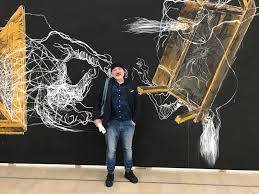SIX FUNDAMENTAL MACRO PRINCIPLES
 Macro photography is sometimes mistakenly called “close-up photography” in photography. This statement cannot be considered fundamentally false, but if you use it, then very many may consider you an amateur. In the classical sense, macro photography is called shooting at a scale of 1: 2 – 20: 1 (that is, 1 centimeter of the image on the photosensitive material of the camera corresponds to 2-0.05 centimeters of the object). As a rule, macro subjects are very small – most often they are insects or flowers.
Macro photography is sometimes mistakenly called “close-up photography” in photography. This statement cannot be considered fundamentally false, but if you use it, then very many may consider you an amateur. In the classical sense, macro photography is called shooting at a scale of 1: 2 – 20: 1 (that is, 1 centimeter of the image on the photosensitive material of the camera corresponds to 2-0.05 centimeters of the object). As a rule, macro subjects are very small – most often they are insects or flowers.
Larger objects can also be interesting for macro shots if, for example, a photographer wants to focus on some very specific, smaller details of a large object.
Macro photography can be incredibly fun and useful, or it can become problematic. The level of mastery is achieved through acquired knowledge, experience and much more. This is one of the most demanding in terms of knowledge and level of technology section of photography. Inspired by my skills, I want to share with those who want to plunge into the mysterious and wonderful world of macro photography.
Equipment
Whether you use the macro mode of the simplest soap dishes or the flagship models of full-frame cameras from leading manufacturers for shooting, there is always a high probability of obtaining a “pass-through” picture. Whether you shoot static grass or falling dynamic drops of morning dew, in order to fully realize the full potential of the planned plot of macro photography, it is better to choose specialized equipment, it will bring obvious benefits.
Assuming that DSLR is still used for serious macro photography, the best solution would be to purchase a macro lens. If the budget does not allow you to focus on a new lens, you can try a less expensive way – use, for example, a set of extension rings (they are sometimes called macro rings) with the lens that is already available.
Learn the topic
When a photographer conducts a photo session with a person and wants to get good portraits, he is certainly trying to establish contact with him or her, is not it? This helps make the photos better. The same principle applies to macro photography, especially when shooting insects.
You need to see how insects behave when a person approaches them, sometimes shooting insects requires skill and patience even more than a real hunt. Obviously, if you take pictures of flowers or sea shells, they will not run away at your slightest approximation. That is why it is important to know as much as possible about what you are about to shoot.
Patience, patience and again patience
Patience is necessary not only for the process of photographing macro, you need to be patient in and of itself. If you intend to chase insects that are fleeing from you, your photos will most likely be unsuccessful. Instead of hunting for the elusive dragonfly, just linger in the area where dragonflies fly often … and wait. If you are patient enough and vigilant, the ability to shoot in the end will certainly appear.
And here patience for oneself comes out on top. Believe me, when I say that you will have a lot of bad pictures, when the background is poorly lit, the main thing is out of focus, you should not be upset. Just keep trying! When in the end you take the perfect shot, you will feel dizzy with delight.
Let there be light!
Great lighting is the key to successful macro photography. We all would like to use natural light, but sometimes even the sun does not work.
There are several conditions that must be considered when determining the sufficiency of natural light. The subject and time of day, the intensity of sunlight and the lens used. If you are faced with the task of shooting leaves in low light conditions in the early morning, the question immediately arises of how to organize the backlight in order to photograph the leaves in the light, which undoubtedly adds artisticness to the picture.
The backlight is good for macro photography of flowers or butterflies. Enlightened optics can do a good job of exposure, but “light up” a picture, make it more voluminous and more interesting, it may not work without backlighting.
If we consider the option when shooting takes place against the sun, then the problem can be solved with a flash. The built-in flash, of course, is unlikely to adequately cope with the task, so an external flash may be needed.




